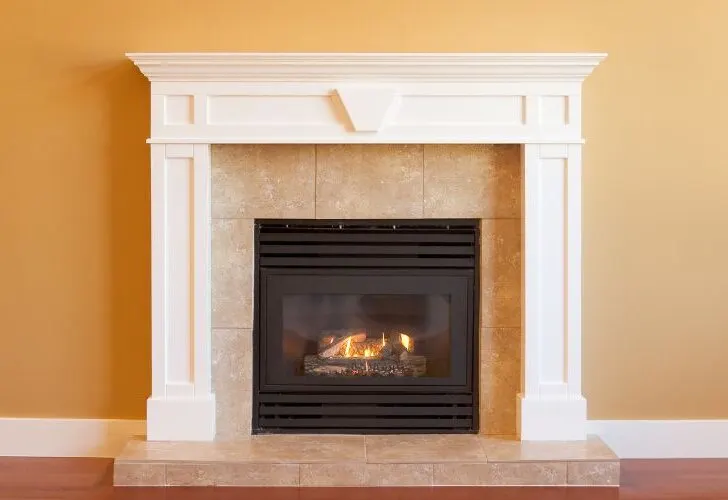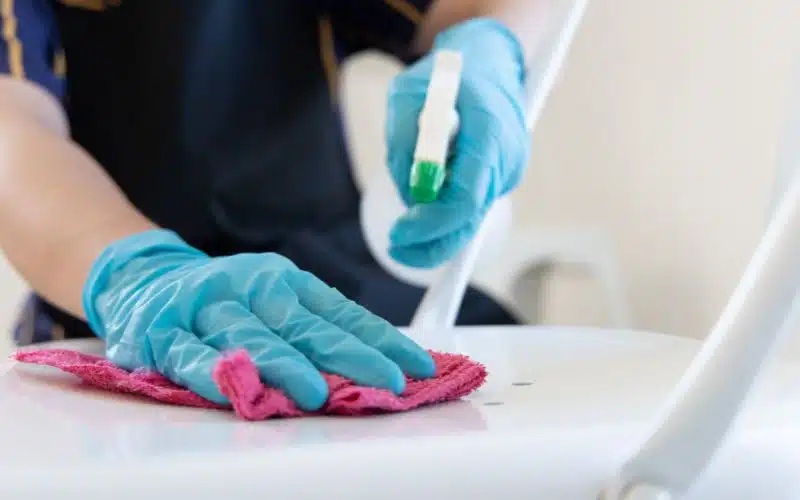Gas fireplaces come in handy in aiding efficient heat supply and fuel management. But things can go wrong at times and consequently stop gas flow.
Such scenarios can be frustrating, but don’t worry; this article will assist you in finding your way out.
The most likely reason for the non-flow of gas in your fireplace is a restriction inside the gas diffuser. Also, it could be that the gas valve is off, causing the gas pilot not to light up. Loose connections and a closed gas valve can also cause this problem.
Why Is Gas Not Flowing to Fireplace?

There are numerous reasons why gas will not flow to your place. However, the most common is a faulty diffuser and a deactivated gas valve.
Other possible reasons include an Inefficient natural gas line\propane reservoir and loose connections.
#1. Faulty Gas Diffuser
If there’s a non-flow of gas into your gas diffuser, the gas diffuser may be faulty. It would be best if you always inspected it.
A gas diffuser usually diffuses the gas that flows to the fireplace. So if it’s not working correctly, your fireplace won’t receive any gas.
Abnormalities like this are familiar with setups that have existed for a long time and are aging.
#2. Deactivated Gas Valve
Gas valves play a significant role in ensuring efficient gas fireplace setups. If your gas valve isn’t open, gas will not flow. In most cases, the gas valve knob may be off and merely needs activation.
Sometimes, deactivation is not even the issue. The issue may be the replacement of the knob. It would help if you merely inspected adequately.
The gas fireplace will never receive gas when the gas valve knob is not working or deactivated.
#3. Inefficient Natural Gas Lines Propane Reservoir
There are a variety of means through which gas fireplaces operate. And conceding that yours depends on a propane reservoir, you need to ensure that it’s supplying the gas efficiently.
There’s always a likelihood that the tank may be empty and requires refilling.
If you don’t use propane tanks but natural gas lines, ensure that the setup is in good shape and provides gas to the gas fireplace.
Conceding that there’s no gas, reach out to your utility company. It’s the fault of your utility company to know what’s wrong. They’re responsible for providing gas.
#4. Loosed Connections
One of the overlooked reasons for the non-flow of gas into fireplaces is loose connections. It could be that there are loose connections between various parts of the setup.
And, of course, you know that loose connections cause inefficiency and hinder gas flow.
Similarly, these loose connections can cause leakages in various areas, so you should check for leakages too.
If there’s a leak somewhere in the system, the gas will not be able to make its way through. Such scenarios can likewise cause a pressure buildup, leading to an explosion.
Hence, I advise you always ensure that all connections are tight; check for broken parts in the system.
If you don’t have prior knowledge, contact any local gas fireplace service to inspect all the connections in the setup.
How Do I Know If Gas Is Going to My Fireplace?
If you’ve noticed a decrease in the fire quality or an increase in the amount of smoke coming from your chimney, you may want to investigate whether or not your fireplace is getting gas.
A clue that your fireplace is getting gas is an occurrence of ignition. Yes, if ignition occurs, know that there have been gas flow.
The ignition works so that as gas reaches the fireplace system, the gas fireplace pilot ignites it. So if gas flow is interrupted, you’ll have little issues with ignition.
But the problem is that sometimes the gas may be flowing. So instead, it would be the faulty gas pilot (clogged with soot or dirt.)
Knowing whether your gas fireplace is getting or not is easy because numerous factors can affect a fireplace’s performance.
It’s pretty clear that if there’s no gas in the gas lines or tank, your fireplace won’t get any gas because there’ll be nothing to distribute.
However, ignition remains a perfect clue because sometimes, even though there’s gas in the gas lines, breaks and obstruction can cause non-flow.
How to Check Issue with Gas Fireplace?
If your gas fireplace system is malfunctioning or not working effectively, numerous things can come into play. First, you should ensure a gas flow to the gas fireplace.
Then, try to see that all parts are functioning effectively; this includes the gas fireplace pilot and the thermocouple.
#1. Ensure There’s Gas Flow
Yes, anytime you have issues with your gas fireplace, your first line of action should be to inspect the gas flow.
And it’s because, without gas flow, there’ll be no room for ignition; consequently, there’ll be no fire.
Non-gas flow, sometimes, is a result of a faulty gas diffuser. A gas diffuser diffuses the gas that flows to the fireplace.
So if the gas diffuser is clogged or not working, you’ll have issues with gas flow.
But besides a malfunctioning gas diffuser, insufficient gas in gas reservoirs or gas lines can cause gas non-flow.
So yes, if your gas fireplace system relies on propane tanks, it must’ve been empty and needs refilling. In the same way, if you rely on natural gas, there may be inefficient gas flow.
So you should know all these things and probably put them in place if you have issues with your gas fireplace.
#2. Check the Gas Fireplace Pilot Light
It is essential to check the pilot light after you ascertain that there is no gas coming out of the pipe. It usually is in charge of flame ignition.
You can do this by opening the valve on the gas tank and turning the knob on your fireplace until you see a blue flame. The pilot light should be lit and burning bright at this point.
#3. Check the Thermocouple And Thermopile
Most people probably don’t know that thermocouples, like in any other system, are crucial in ensuring ignition, though when necessary.
Thermocouples are sensors that detect temperature between gas fireplace pilots and gas valves; in turn, they produce electricity for ignition when the need arises.
If your fireplace is malfunctioning, check the thermocouple; see if it’s properly fixed or not. Fix it correctly if it’s not.
And in the same way as thermocouples, thermopiles produce voltages that can use in place of thermocouples.
Thermopiles and thermocouples aren’t different; the only thing is that newer fireplace models use thermopiles instead.
In scenarios where you’ve checked and put everything in order, but the fireplace isn’t still functioning, test the thermopile; see if it needs replacement or a proper tightening will do.
How Do You Unclog a Gas Fireplace Line?
The process is quite simple. You only need a handheld vacuum cleaner, brush, and fabric piece. Using the handheld vacuum cleaner, remove the easy-to-get-away soot from the burner.
Likewise, using the brush, scour the burner ports, then apply the use of the vacuum cleaner again.
How to Fix When Gas Isn’t Flowing to Fireplace?
You can fix the problem of gas not flowing to the fireplace by proffering solutions to the possible problems or diagnosed issues.
| Possible Causes | Solution |
|---|---|
| Insufficient gas in the gas tank\gas line | Refill the tank with gas |
| Gas fireplace pilot not lit | light up the pilot |
| Faulty gas valve | possible replacement |
| Closed gas valve | switch on the gas |
Conclusion
Keenly follow all the procedures and steps I’ve presented; you’ll find your way out of the no-gas flow situation.
In addition, you should always inspect your gas fireplace system to ensure that things are in order and spot faults before they manifest. Doing so, you’ll avoid most gas fireplace malfunctioning issues.





